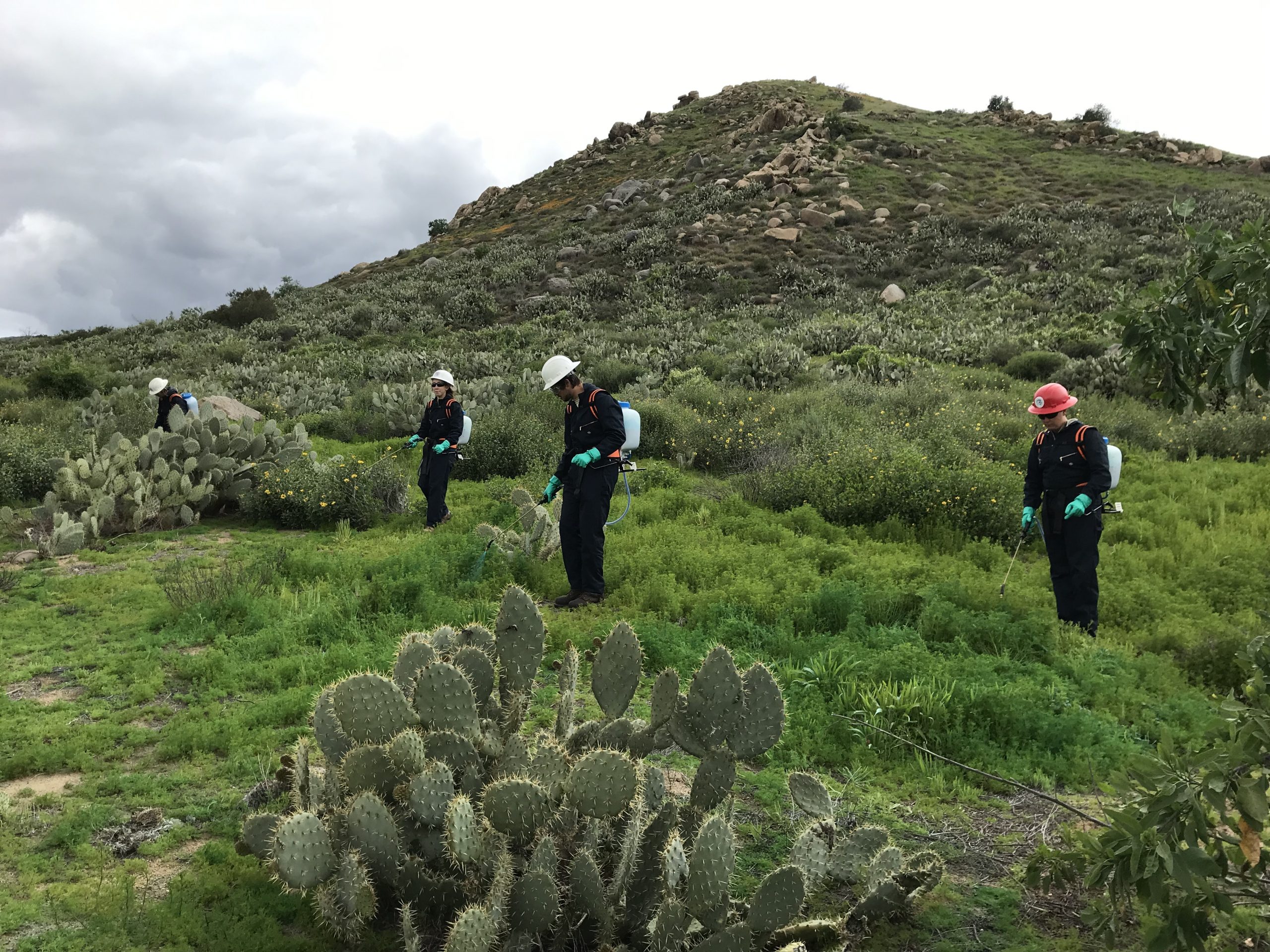Giraffes in the Front-yard, Cactus Wren in the Back
San Diego Zoo Global is committed to conserving rare plants and animals both abroad and in their own backyard. At the San Diego Zoo Safari Park, this commitment is literal, with half of the Safari Park developed to exhibit and support exotic animals and the backyard is a natural coastal sage scrub reserve. The newly minted Natural Lands Program is taking on the challenges associated with stewarding this important piece of Southern California habitat.
Situated in the San Pasqual Valley of San Diego’s North County, the San Diego Zoo’s Safari Park is world-famous, attracting over a million visitors a year. Looking out over the African plains, visitors can observe herds of Thompson’s gazelles, scimitar-horned oryx, reticulated giraffes, and white rhinoceros. Though most may have never seen a Kenyan savanna in person, the view is a rare but familiar sight, reinforced in our minds by picture books and nature documentaries.
Past the rhinos and just over the hill to the east is an equally wild landscape, one that, paradoxically, every visitor walking through the gates has seen, but perhaps fewer can identify with precision: California’s coastal sage scrub. Adjacent to the Safari Park but still within the Zoo lease, the Safari Park Biodiversity Reserve is an 800-acre protected area consisting mostly of coastal sage scrub and subtypes like cactus scrub. Like the Safari Park, the Biodiversity Reserve is home to hundreds of species of plants and animals; unlike the Park, though, they are not on display, usually only noticed by the handful of researchers and students conducting work there.
-
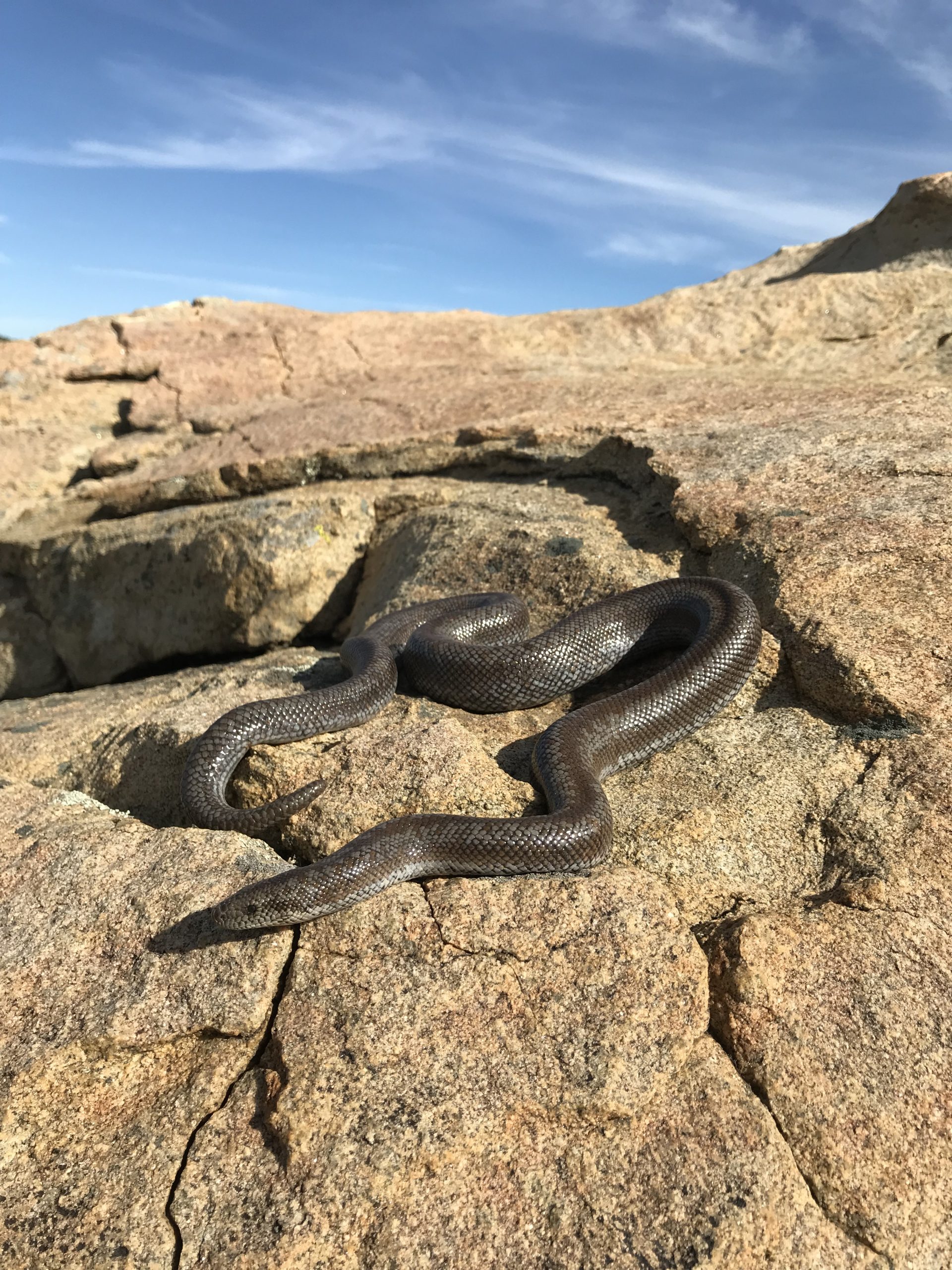
Rosy boas (Lichanura trivirgata) are a cryptic but spectacular resident of the Safari Park Biodiversity Reserve. Photo: Carlos de la Rosa, courtesy of San Diego Zoo Global. -
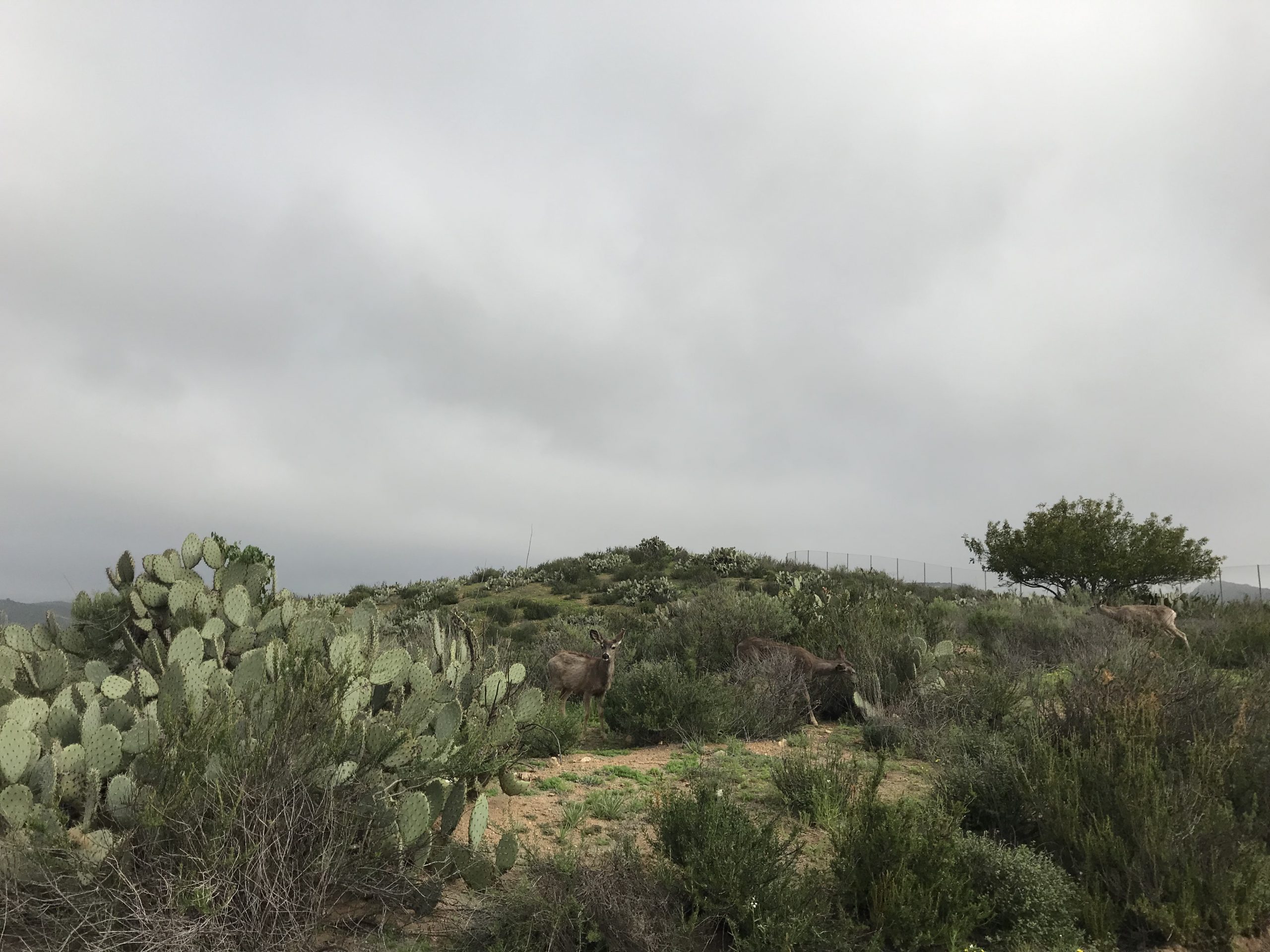
Mule deer (Odocoileus hemionus) are a common sight in the coastal sage scrub of the San Pasqual Valley in San Diego’s North County. Photo: Carlos de la Rosa, courtesy of San Diego Zoo Global. -
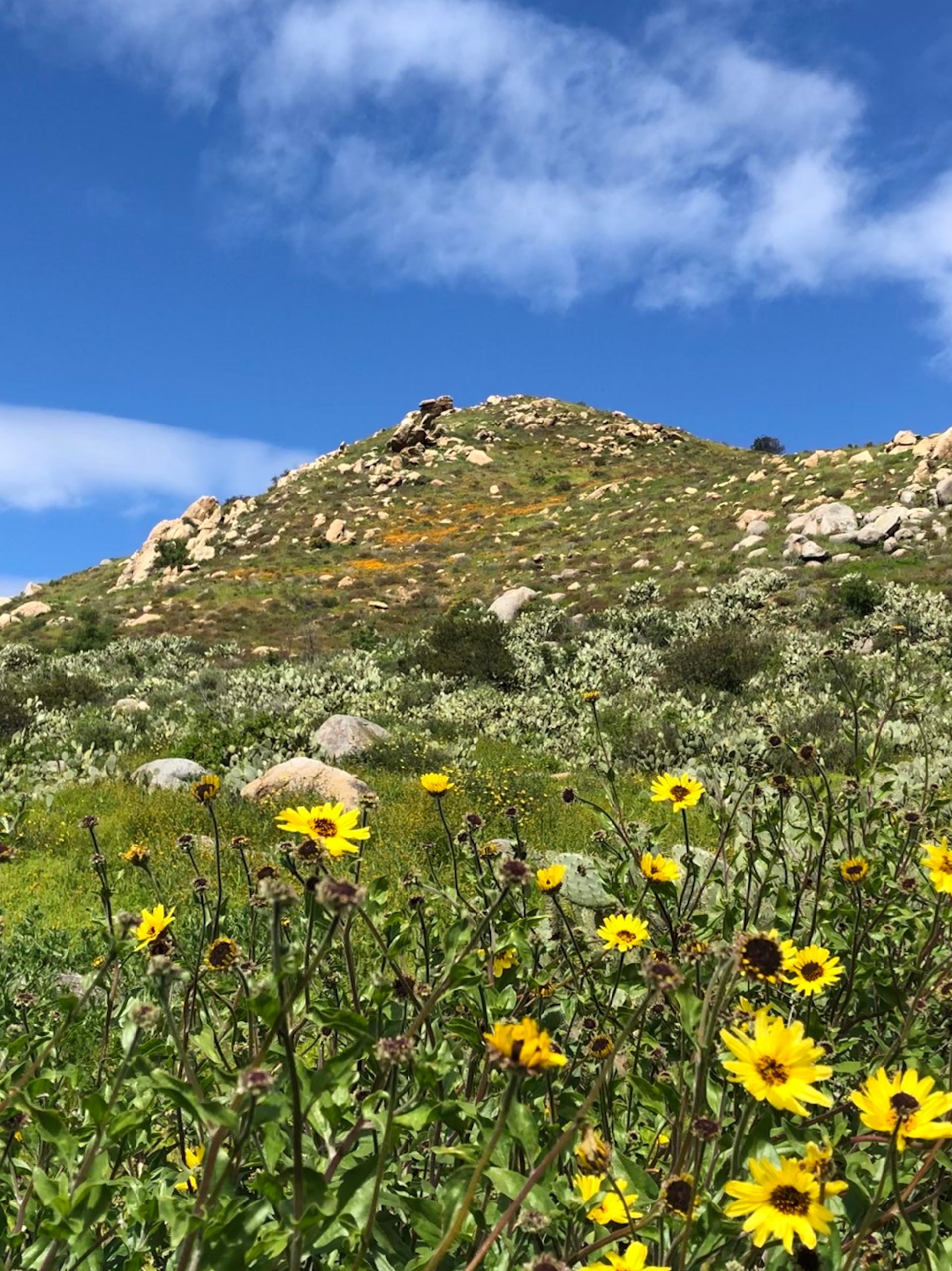
Cactus scrub and the surrounding coastal sage scrub habitats are home to many plant and animal species. Photo: Christa Horn, courtesy of San Diego Zoo Global.
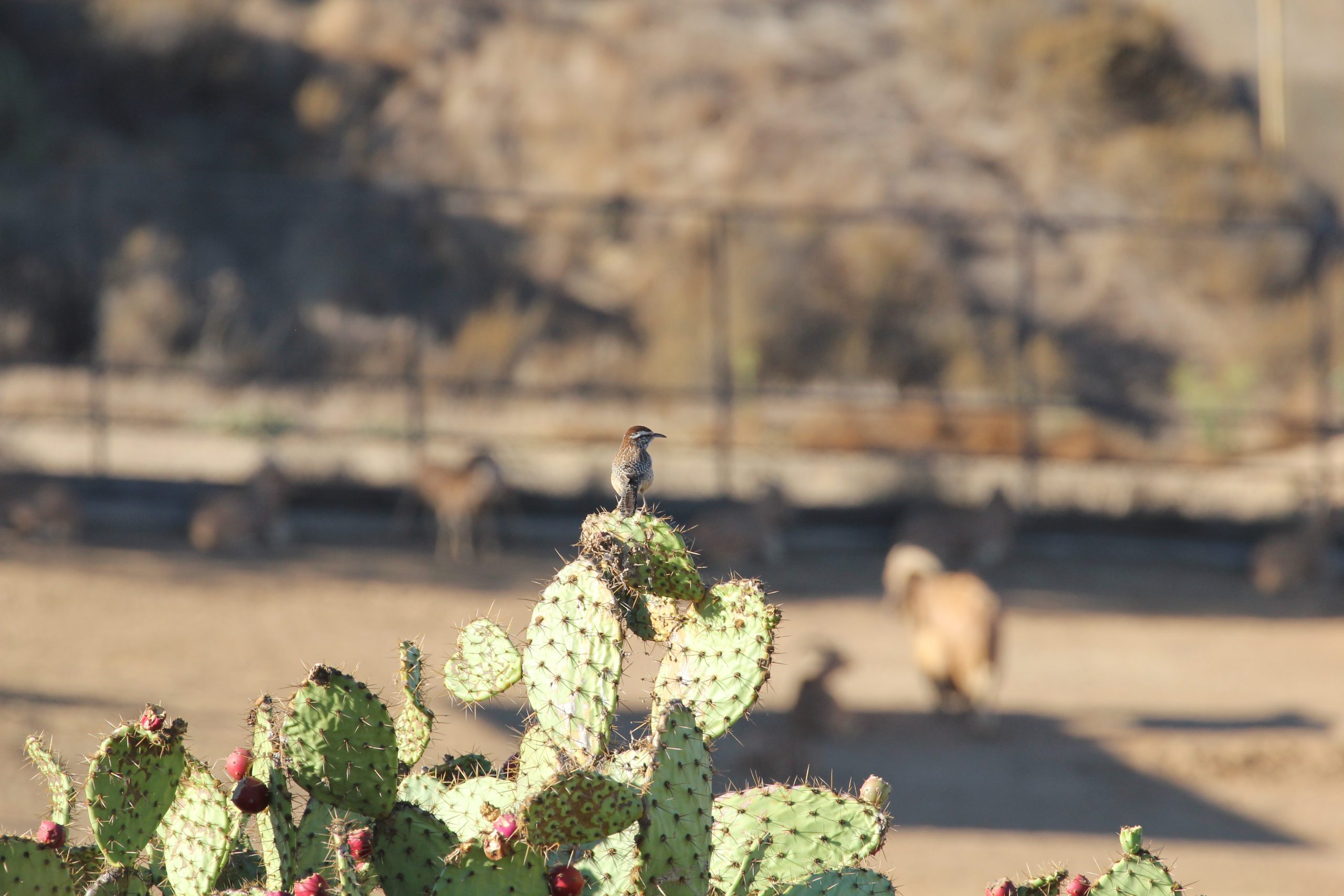
In the summer, the hills are a patchwork of browns and greys, a drab tapestry that gives no indication of the spectacular colors that come with spring. At the first rains, bush rue (Cneoridium dumosum) and four o’clock (Mirabilis laevis) flowers begin to brighten the landscape; if precipitation continues, the orange and yellow of California poppy (Eschscholzia californica), and bush sunflower (Encelia californica) will mix with the purple tints of Parry’s phacelia (Phacelia parryi), caterpillar phacelia (Phacelia cicutaria), and blue fiestaflower (Pholistoma auritum). Later in the season, as the days become warmer and longer, more color emerges: purple chia (Salvia columbariae), pink tomcat clover (Trifolium willdenovii), violet showy penstemon (Penstemon spectabilis), magenta owl’s clover (Castilleja densiflora), to name a few of the species. Under a stand of coast live oak (Quercus agrifolia), you may even find Campo Clarkia (Clarkia delicata), an annual recognized as threatened or endangered in California.
San Diego County is noteworthy for its biological diversity, as well as high numbers of rare and threatened species. Habitat destruction, wildfire, and invasive species are highest on the list of likely drivers of local biological extinctions. Recently, San Diego Zoo Global created the Natural Lands Program to begin taking a more hands on and comprehensive approach to managing the habitat on our lands. In the Biodiversity Reserve, mitigating wildfire and invasive species are the highest priorities; if unchecked, either could cause sensitive species of concern, such as the coastal cactus wren, to lose precious habitat.
Our goals for the Biodiversity Reserve fall into two categories. First, we aim to manage the natural lands in such a way that native species thrive, and are resilient to changing climate, wildfire, drought, and invasive species. This year, we treated 18 acres of stinknet (Oncosiphon piluliferum), an annual weed and emerging threat in the area, gaining a foothold in our south-facing slopes. These same slopes support an extensive patch of prickly pear cactus, vital habitat for the coastal cactus wren. By removing stinknet, we are improving habitat for cactus wrens and the many other species that call coastal sage scrub home.
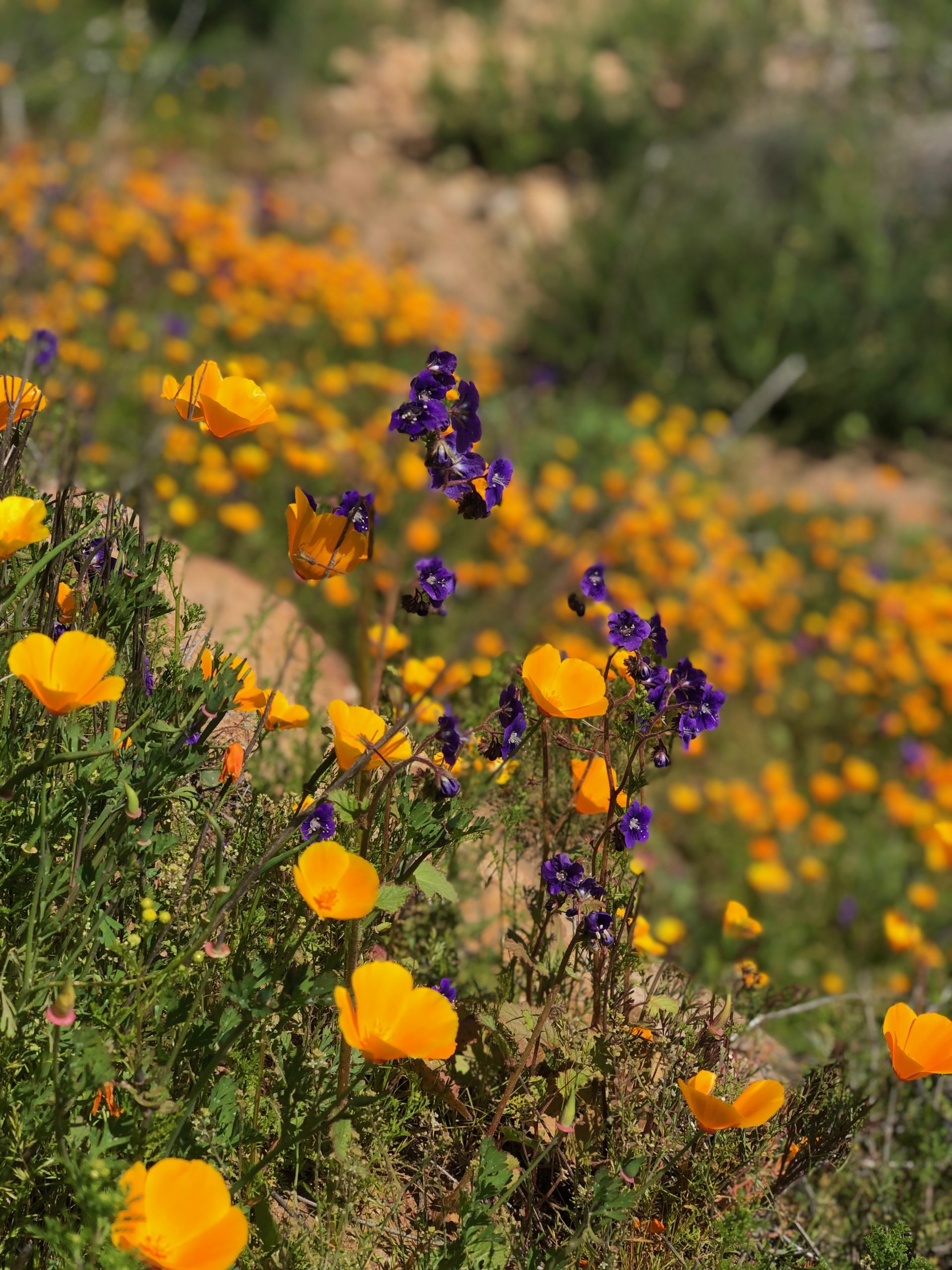
The weed removal also helps protect the habitat from wildfire by reducing fine fuels that could increase the frequency of fires. An early task of the Natural Lands Program will be to develop a management plan to help guide and prioritize management activities.
Second, we are working to build a robust research and monitoring program that feeds back into our management plan. To know our baselines and historical populations of sensitive species, we are pulling together data and findings from previous research in the Biodiversity Reserve; likewise, we are planning new research projects designed to help us chart a path forward. Later this spring, we will conduct a thorough inventory of locations likely to contain rare plants. After a decade of drought in Southern California, the robust rains this year have us excited to see what species have been lying dormant in the seed bank. We are also designing experiments to test the response of snakes and lizards to habitat restoration, and to understand how species will survive as our climate changes.
Though both management and research activities have occurred on the conserved land for decades, the new Natural Lands Program is an opportunity to place them in the context of a comprehensive management plan. SDZG’s commitment to this program also demonstrates its commitment to conservation, not only of the giraffes, elephants, and other exotic species in their care and abroad, but to the species found in their own backyard.
